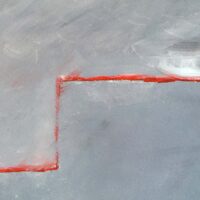Mathematically, there are three answers. The simplest way to create the middle is the arithmetic mean. For example: to find the middle between the numbers 4 and 9, we have (4 + 9) / 2 = 6.5.
How great is it that there are multiple ways to create a middle? Even simple mathematics shows that the middle is a much richer and more diverse place than the simple arithmetic mean. This is followed by the geometric mean. Here, the numbers are not added together but multiplied, and then the root is drawn. To illustrate this, imagine that you draw a rectangle from the two numbers 4 and 9 and form it into a square of the same area in order to understand each side as a newly gained middle. As a calculation: √(4 × 9) = √ 36 = 6
This middle gives the smaller number more weight. The harmonic middle of projective geometry is the third way to balance two numbers. Here, the product of the two numbers is doubled and divided by their sum. 2 × (4 × 9)/(4 + 9) = 5.54. The smaller number receives even more weight here and not without reason is this middle formation called ‹harmonious›, because here the middle moves even more to the smaller partner, the small becomes large through the middle formation. Whoever understands the arithmetic mean as the actual one after this digression shows how much he or she is at home or even trapped in classical Greek geometry. The middle is equally far away from both poles, but the ‹same distance› is not rigid, not to be taken absolute – that’s life! Therefore, the familiar arithmetic mean is the means of lifeless nature, while geometric and harmonious means show the way to the living.













